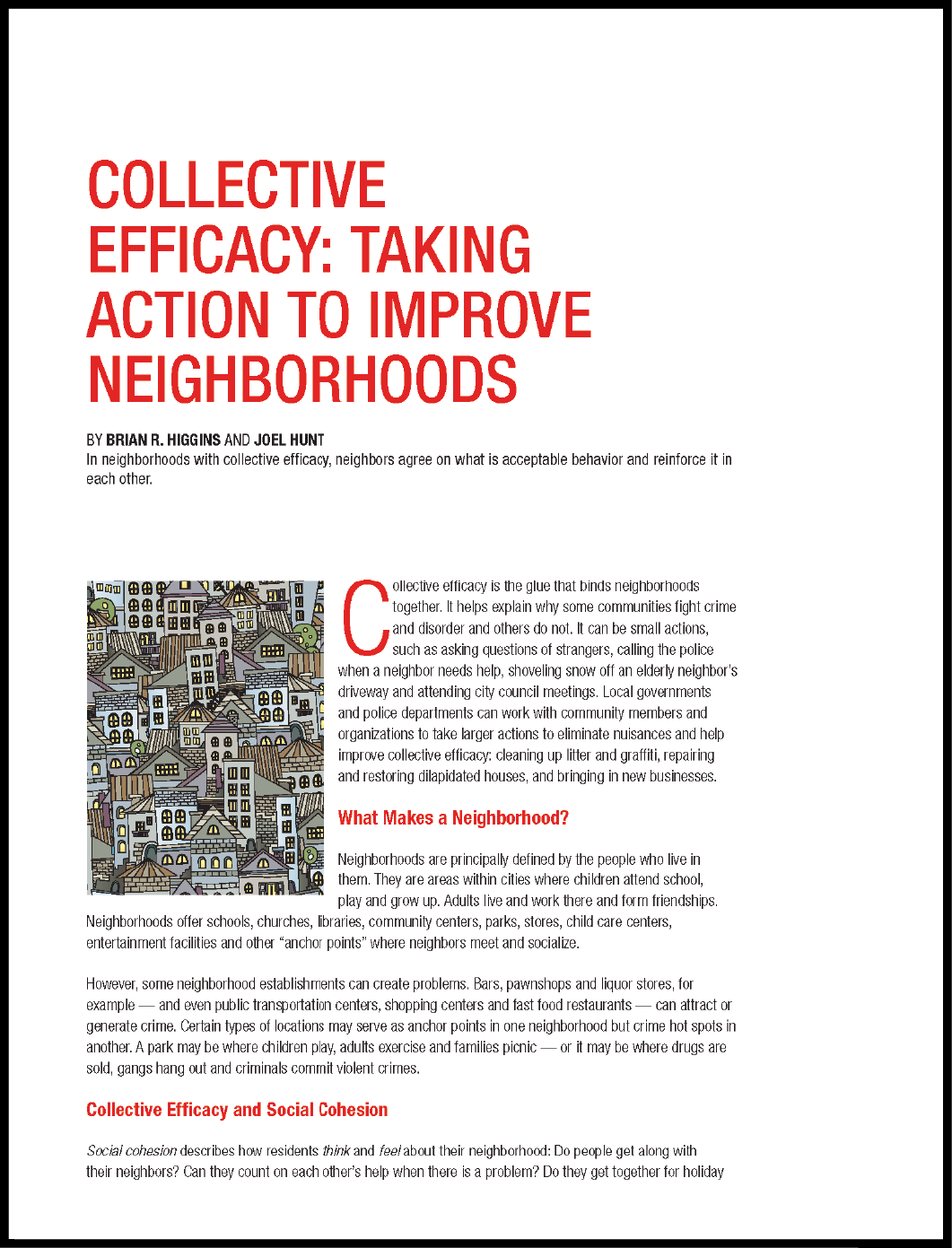
In neighborhoods with collective efficacy, neighbors agree on what is acceptable behavior and reinforce it in each other.
Collective efficacy is the glue that binds neighborhoods together. It helps explain why some communities fight crime and disorder and others do not. It can be small actions, such as asking questions of strangers, calling the police when a neighbor needs help, shoveling snow off an elderly neighbor's driveway and attending city council meetings. Local governments and police departments can work with community members and organizations to take larger actions to eliminate nuisances and help improve collective efficacy: cleaning up litter and graffiti, repairing and restoring dilapidated houses, and bringing in new businesses.
